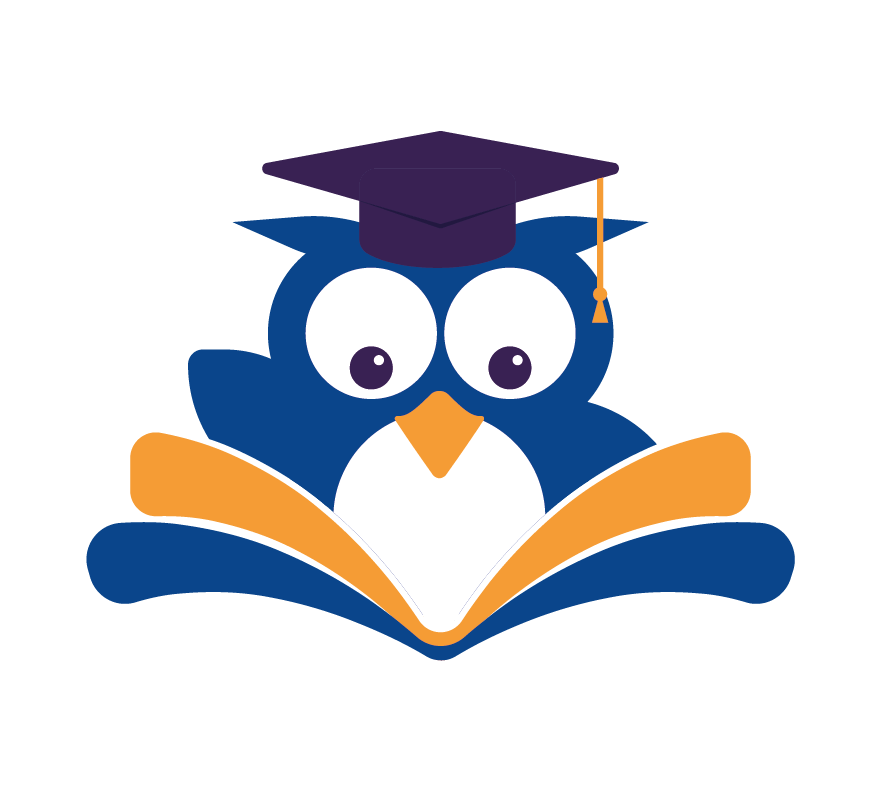Are you tired of studying feeling like a chore? Mastering learning can turn it into something enjoyable and effective. We believe that with the right approach, anyone can become a proficient learner.
Mastery learning is about personalized learning, regular checks, and help when needed. By setting clear goals from the start, we can map out our path to success. This method focuses on showing skills at certain levels, making learning more effective.
We’re excited to share the four keys to mastering learning that can help you reach your goals. By using these strategies, you’ll become a confident, capable learner.
Key Takeaways
- Mastery learning involves personalized learning and regular assessments.
- Defining mastery upfront is crucial for success.
- Effective learning techniques can make studying more enjoyable.
- The four keys to mastering learning can help you achieve your goals.
- Applying these strategies can make you a confident, capable learner.
The Science Behind Effective Learning
Learning how we learn is crucial for reaching our full potential. We’ll explore the science of effective learning. This will show how our brains adapt and grow, making new connections that solidify knowledge.
How Your Brain Forms New Neural Connections
When you learn something new, your brain makes new pathways between neurons. This is called neuroplasticity. It lets your brain reorganize and strengthen connections. For example, practicing a new skill over and over can make the neural pathways stronger.
The Cognitive Processes That Drive Retention
Retention is driven by several cognitive processes. These include attention, repetition, and practice. By understanding these, you can use effective learning methods and techniques to improve retention.
Working Memory vs. Long-term Memory
The difference between working memory and long-term memory is key for study skills improvement. Working memory holds information temporarily, while long-term memory keeps it for longer. Using techniques like spaced repetition can move information from working memory to long-term memory, improving retention.
| Memory Type | Characteristics | Techniques for Improvement |
|---|---|---|
| Working Memory | Temporary information storage | Chunking, Mnemonics |
| Long-term Memory | Permanent information storage | Spaced Repetition, Practice Testing |
By understanding how our brains work, we can create educational success tips. These tips will make learning more effective and fun.
The Four Keys of Learning: An Overview
To reach your full learning potential, it’s key to know the four essential learning keys. These are not just ideas; they’re real strategies for success in school.
Key 1: Attention and Focus
Attention and focus are the base of good learning. By staying focused, you block distractions and learn better. Learning to focus is vital today, with so many things competing for your attention.
Key 2: Meaningful Engagement
Engaging deeply with new info means linking it to what you already know. This deepens your understanding and lets you use what you’ve learned in new ways.
Key 3: Feedback and Adjustment
Feedback is key in learning. It shows how you’re doing, what needs work, and how to change your approach. Being open to feedback is crucial for ongoing learning.
Key 4: Consolidation Through Practice
Practicing what you’ve learned makes it stick with you. Spaced repetition and retrieval practice are great ways to solidify your knowledge.
How These Keys Work Together
The four learning keys work together. For example, focusing (Key 1) helps you engage deeply (Key 2), making you ready for feedback (Key 3). Then, practicing (Key 4) makes your learning last.
By using these keys, you can build a strong learning plan that boosts your grades.
Key1: Mastering Attention and Focus
Learning to control your attention is a game-changer for students and lifelong learners alike. In a world filled with distractions, mastering attention and focus is crucial for effective learning.
Creating Distraction-Free Learning Environments
To improve your study skills, start by creating an environment conducive to learning. This means decluttering your workspace, turning off notifications on your devices, and finding a quiet spot away from foot traffic. By doing so, you’ll be able to focus better and retain information more effectively.
- Identify a quiet, dedicated space for studying.
- Remove or silence potential distractions like TVs and phones.
- Consider using noise-cancelling headphones or playing background music that enhances focus.
The Pomodoro Technique and Other Time-Boxing Methods
One effective learning technique is the Pomodoro Technique. It involves working in focused 25-minute increments, followed by a 5-minute break. After four cycles, take a longer break of 15-30 minutes. This technique helps maintain sustained attention and avoid burnout.
- Choose a task you want to work on.
- Set a timer for 25 minutes and work on the task without any breaks.
- Take a 5-minute break when the timer goes off.
- Repeat the cycle, taking a longer break after four cycles.
Mindfulness Practices to Strengthen Concentration
Mindfulness can significantly enhance your ability to focus. Regular mindfulness practice has been shown to improve attention and concentration. Simple mindfulness exercises include deep breathing, body scan meditation, or simply paying attention to your surroundings.
Overcoming Digital Distractions
In today’s digital age, it’s easy to get sidetracked by social media, email, or text messages. To overcome these distractions, consider using website blockers or apps that help you stay on track. By minimizing digital distractions, you’ll be able to implement effective learning strategies and improve your overall study skills improvement.
By incorporating these strategies into your daily routine, you’ll be well on your way to mastering attention and focus, a crucial step in achieving learning mastery.
Key2: Creating Meaningful Engagement
Understanding starts with linking new info to what we already know. This makes learning active and fun.
Connecting New Information to Prior Knowledge
Linking new ideas to what we know helps us remember better. For example, learning a new language is easier when you connect words to your life.
Let’s say you’re learning a new science theory. Relate it to something you see every day. This makes it easier to understand.
Implementing Active Learning Strategies
Active learning means you’re not just reading or listening. Try summarizing in your own words or teaching it to someone.
Note-Taking Methods That Enhance Understanding
Good note-taking is key to active learning. Tools like the Cornell Note-taking System help organize your thoughts. It divides your paper for notes and summaries.
- Mind Mapping: Visualize your notes to create a map of the information.
- Charting: Use charts to organize information, especially for comparing and contrasting.
- Outlining: Create an outline to structure your notes hierarchically.
Cultivating Curiosity as a Learning Tool
Being curious makes learning fun. Ask questions like “What if?” or “Why is this so?” to explore more.
| Technique | Description | Benefit |
|---|---|---|
| Mind Mapping | Visual note-taking method | Enhances memory and understanding |
| Self-Questioning | Asking questions about the material | Promotes active engagement and curiosity |
| Discussion Groups | Engaging in group discussions | Fosters different perspectives and deeper understanding |

Using these strategies makes learning fun and effective. It’s about being proactive in your learning journey.
Key3: Leveraging Feedback for Continuous Improvement
To get the most out of your learning journey, understanding the importance of feedback is key. Feedback helps you find areas to improve and adjust your learning strategies. It’s a crucial tool for growth.
Identifying Valuable Feedback Sources
Not all feedback is equal. To make the most of it, find sources that are both relevant and reliable. This could be a mentor, a peer, or self-assessment tools. Look for feedback that is specific, timely, and actionable.
Receiving Criticism Constructively
Receiving feedback, especially criticism, can be tough. But it’s important to see it as a chance to grow, not a personal attack. Listen actively, ask questions, and focus on the message, not how it’s delivered.
Creating Feedback Loops in Self-Directed Learning
In self-directed learning, setting up your own feedback loops is essential. This means setting clear goals, tracking your progress, and adjusting your strategies based on what you learn. Technology can help a lot with this, offering tools for automated feedback.
Using Technology for Automated Feedback
Many digital tools provide instant feedback on your performance. For example, language learning apps can correct your pronunciation, and coding platforms can spot and suggest fixes for errors. Using these tools can make your learning more efficient.
| Tool Type | Examples | Benefits |
|---|---|---|
| Language Learning Apps | Duolingo, Babbel | Instant pronunciation correction |
| Coding Platforms | LeetCode, HackerRank | Real-time code review and suggestions |
| Learning Management Systems | Moodle, Canvas | Automated grading and feedback tracking |
By embracing feedback and learning to use it well, you can speed up your learning. The goal is not just to get feedback but to act on it and keep improving.
Key4: Consolidation Through Deliberate Practice
Deliberate practice is a key to learning. It helps you use the right strategies to remember what you’ve learned. Mastering a skill needs more than just doing it once. It requires focused, structured practice.
Implementing Spaced Repetition Systems
Spaced repetition helps you remember things for a long time. Reviewing material at longer intervals helps solidify it in your memory. For example, language learners can use apps like Anki to review vocabulary words at the right time. The key is to review the material before you forget it, but not so soon that it becomes too easy.

The Power of Retrieval Practice and Testing
Retrieval practice, or the testing effect, is great for remembering things. By actively recalling information, you make it easier to remember. Try using flashcards or practice quizzes to test your knowledge. Don’t just re-read your notes; instead, actively try to recall the information from memory.
Interleaving Different Subjects for Deeper Learning
Interleaving means switching between different types of material or problems. For example, a math student might switch between different types of problems to improve their skills. This technique helps you understand material better and apply it in different ways.
Creating Practice Schedules That Stick
To make deliberate practice a habit, you need a good schedule. Start by setting goals and breaking them down into smaller steps. Then, make a schedule that lets you practice regularly. Consistency is key when it comes to deliberate practice.
| Practice Technique | Description | Benefits |
|---|---|---|
| Spaced Repetition | Review material at increasingly longer intervals | Long-term retention, improved recall |
| Retrieval Practice | Actively recall information from memory | Strengthens memory, improves understanding |
| Interleaving | Switch between different types of material or problems | Deepens understanding, improves application |
By using these strategies, you can improve your skills. Remember, deliberate practice is not just about spending time. It’s about using the right techniques to reach your goals.
Developing a Growth Mindset to Accelerate Learning
Embracing a growth mindset is key to unlocking your full learning potential. It changes how you learn and leads to greater success.
Reframing Challenges as Opportunities
At the heart of a growth mindset is seeing challenges as chances to grow. Carol Dweck, a famous psychologist, said, “You don’t have to be great to start, but you have to start to be great.” This mindset helps you face obstacles with confidence and curiosity, not fear.
Strategies for Overcoming Learning Plateaus
Learning plateaus happen, but you can get past them. Try new learning strategies like active recall or spaced repetition. These can spark your growth mindset and get you moving again.
Using Setbacks as Valuable Feedback
Setbacks are a normal part of learning. Instead of getting down, use them to improve your strategy. Thomas Edison said, “I have not failed. I’ve just found 10,000 ways that won’t work.”
“The greatest glory in living lies not in never falling, but in rising every time we fall.” – Nelson Mandela
Building Your Personalized Learning System
Understanding how you learn best can make studying more fun and effective. Start by figuring out your learning style. Then, create a study space that boosts your productivity. Lastly, build a support network to keep you motivated.
Assessing Your Learning Preferences and Strengths
First, find out your learning style. Are you a visual, auditory, or kinesthetic learner? Knowing this helps you pick the right study materials and methods for you.
| Learning Style | Characteristics | Study Techniques |
|---|---|---|
| Visual | Prefers images, diagrams, and videos | Watch video lectures, use mind maps |
| Auditory | Learns through sound, prefers listening | Listen to podcasts, attend lectures |
| Kinesthetic | Hands-on learning, prefers practical exercises | Participate in labs, engage in role-playing |
Designing Physical and Digital Learning Environments
Your study space is key to staying focused. Make it comfy, well-lit, and free from distractions. For digital learning, make sure your devices are set up for studying with the right apps.
Creating Accountability Through Learning Communities
Being part of a learning group boosts your drive. It could be an online forum, a study group, or a social media group for learning and sharing.
Tracking Progress and Celebrating Milestones
Keep track of your progress regularly. Celebrate every win, big or small, to stay motivated. Use journals, spreadsheets, or apps to follow your learning path.
Practical Tools to Enhance Each of the Four Keys
To master the four keys to learning, we need the right tools. These tools help us unlock our full potential. We’ll look at some practical tools and technologies for each key.
Focus and Attention Enhancement Tools
To improve focus and attention, tools like Freedom and StayFocusd are helpful. They block distracting websites and apps. Mindfulness apps like Headspace and Calm offer guided meditation to boost concentration.
Apps and Methods for Active Engagement
Apps like Quizlet and Kahoot make learning fun and interactive. Creating concept maps with MindMeister and joining online discussions on Edmodo also help.
Feedback Collection and Implementation Resources
For effective feedback, use tools like Google Forms for surveys and Turnitin for assignment feedback. Online office hours with Zoom and peer review platforms like Peergrade are also useful.
Practice and Consolidation Technologies
For practice and consolidation, spaced repetition software like Anki and language learning apps like Duolingo are great. Online platforms like Codewars for coding and Mathway for math practice are also helpful.
| Tool | Purpose | Platform |
|---|---|---|
| Freedom | Focus Enhancement | Web, Mobile |
| Quizlet | Active Engagement | Web, Mobile |
| Google Forms | Feedback Collection | Web |
| Anki | Practice and Consolidation | Web, Mobile |
Conclusion: Your Roadmap to Learning Mastery
We’ve looked at the four keys of learning. Now, it’s time to use them. Mastering focus, creating engaging learning, using feedback, and practicing will change your learning. These strategies help you succeed in school and love learning forever.
Using these keys, you can beat challenges, stay excited, and hit your goals. They work for students and lifelong learners alike. So, start your path to learning mastery today!
Remember, mastering learning can change how we learn. By controlling your learning and using smart strategies, you can see amazing results. So, don’t wait. Begin your learning adventure now and see the power of learning!

